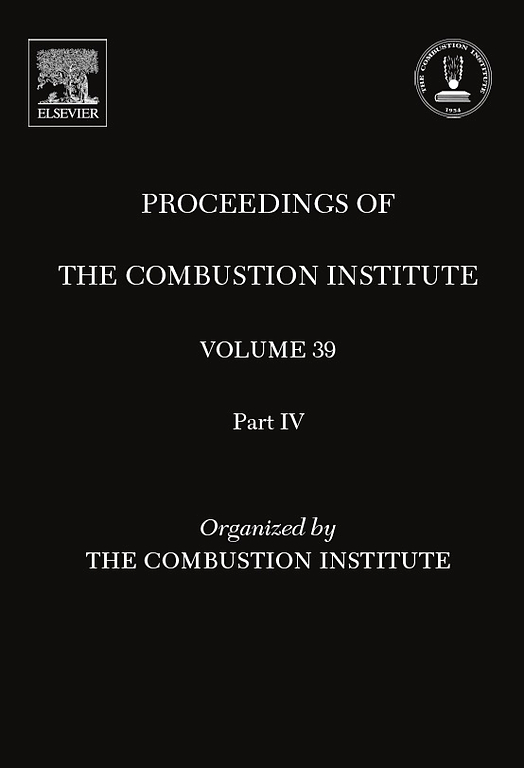An experimental study of the liquid fire evolution inside the compartment under the facing wind condition
IF 5.2
2区 工程技术
Q2 ENERGY & FUELS
引用次数: 0
Abstract
Compartment fire has been studied extensively based on the no wind condition, as well as using the gas fuel to achieve the “controllable” fire growth under the wind. However, no work reported on the compartment fire evolution with fire growth using the liquid as fuel considering the real accident. In the present study, ethanol (liquid) pool fire behavior inside a 30 cm cubic compartment with an opening was investigated experimentally under facing wind condition considering the “uncontrollable” real compartment fire scenario. The burning rate and flame behavior inside the compartment was recorded and measured. It is found that: (1) The stable mass loss rate inside the compartment could be divided into three types according to its evolution with facing wind speed, (I) it first increases or decreases a little, and then flame extinction occurs for lower ventilation factor; (II) it first changes a little and then increases, finally decreases for medium ventilation factor; (III) it first changes a little then increases monotonously for larger ventilation factor of over-ventilated condition. (2) The mass loss rate could be described well by the wind Froude number based on the opening flowing length scale. The mass loss rate ratio between the fuel combustion inside compartment and free condition first changes a little, then decreases with wind speed. This could be well explained as a function of the wind Froude number at the opening and wall heat losses characterizing the temperature rise. These new findings and proposed models provide a basis for understanding compartment fire evolution with liquid fuel combustion inside under the wind effect.迎风条件下车厢内液体火灾演变的实验研究
对无风条件下的车厢火灾以及使用气体燃料实现风下 "可控 "火势增长进行了广泛研究。然而,还没有关于以液体为燃料的车厢火灾演变的研究报告。在本研究中,考虑到 "不可控 "的真实车厢火灾情况,在迎风条件下实验研究了带开口的 30 厘米立方车厢内的乙醇(液体)池火灾行为。实验记录并测量了车厢内的燃烧速率和火焰行为。结果发现(1) 车厢内稳定的质量损失率随迎风速度的变化可分为三种类型:(I) 在通风系数较低的情况下,质量损失率先增大或减小,然后火焰熄灭;(II) 在通风系数中等的情况下,质量损失率先发生微小变化,然后增大,最后减小;(III) 在通风系数较大的过度通风条件下,质量损失率先发生微小变化,然后单调增大。(2)质量损失率可以很好地用基于开口流动长度尺度的风弗劳德数来描述。舱内燃料燃烧与自由状态的质量损失率比值先是略有变化,然后随风速降低。这可以很好地解释为开口处的风 Froude 数和表征温升的壁面热损失的函数。这些新发现和建议的模型为理解风效应下车厢内液体燃料燃烧的火灾演变提供了基础。
本文章由计算机程序翻译,如有差异,请以英文原文为准。
求助全文
约1分钟内获得全文
求助全文
来源期刊

Proceedings of the Combustion Institute
工程技术-工程:化工
CiteScore
7.00
自引率
0.00%
发文量
420
审稿时长
3.0 months
期刊介绍:
The Proceedings of the Combustion Institute contains forefront contributions in fundamentals and applications of combustion science. For more than 50 years, the Combustion Institute has served as the peak international society for dissemination of scientific and technical research in the combustion field. In addition to author submissions, the Proceedings of the Combustion Institute includes the Institute''s prestigious invited strategic and topical reviews that represent indispensable resources for emergent research in the field. All papers are subjected to rigorous peer review.
Research papers and invited topical reviews; Reaction Kinetics; Soot, PAH, and other large molecules; Diagnostics; Laminar Flames; Turbulent Flames; Heterogeneous Combustion; Spray and Droplet Combustion; Detonations, Explosions & Supersonic Combustion; Fire Research; Stationary Combustion Systems; IC Engine and Gas Turbine Combustion; New Technology Concepts
The electronic version of Proceedings of the Combustion Institute contains supplemental material such as reaction mechanisms, illustrating movies, and other data.
 求助内容:
求助内容: 应助结果提醒方式:
应助结果提醒方式:


